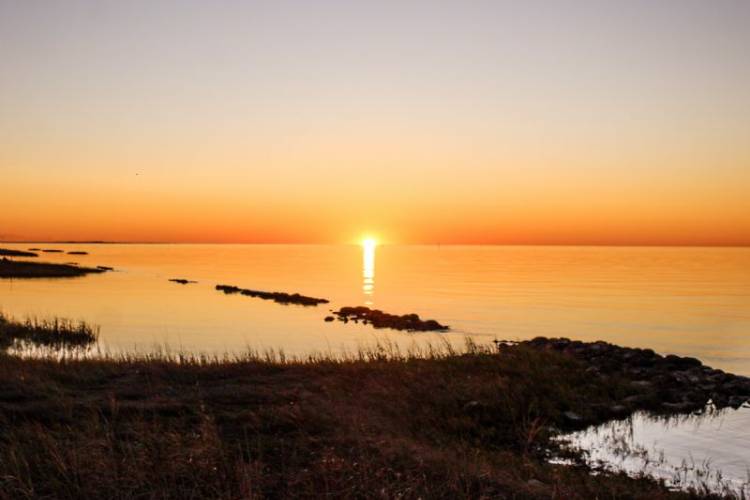Interesting Tidbits of Ocracoke History

2021
- Ocracoke was first described in detail by Giovanni da Verrazzano, an Italian navigator, in 1524. He was unable to navigate the dangerous channels leading into The Pamlico Sound and assumed that China lay beyond the Outer banks.
- The earliest record of the island’s name, on a map made by the English explorer John White in 1585, designated the inlet as “Wokokon”. The name derives from the Woccon tribe of Native Americans, who lived in the mainland tidewater and came to the island for seafood feasts.
- The treacherous waters along Ocracoke and the Outer Banks were instrumental in enabling the early island settlers to foil the British Blockade in The Revolutionary War. Fort Ocracoke, constructed by the Confederacy on Beacon Island in Ocracoke Inlet, two miles to the west-southwest of Ocracoke Village was abandoned by the southern troops in August 1861 after Union victories in Hatteras. In 1998, the remnants of the fort were located and identified, beneath the waters of the inlet.
- One sailor who was not intimidated by the treacherous waters, off the coast, was Edward Teach, our pirate Blackbeard. The cove just inside the inlet, provided a safe haven for the pirate and his crew, along with his loot. In 1718, Blackbeard was captured and beheaded in a bloody dual with his captor, Lt. Robert Maynard of the British Navy, dispatched by the Governor of Virginia.
- North America’s second oldest lighthouse, the Ocracoke Lighthouse, has been in operation since 1823. Our lighthouse is also the oldest operating lighthouse on the east coast of the US. Before we had a lighthouse in the village, there was one built on Shell Castle Rock, abreast of the inlet. It was destroyed by lightning in 1818. We also had a lightship, anchored in the inlet between Ocracoke and Portsmouth Islands, to guide ships through the dangerous waters.
- The island is home to what may be considered to be the only non-embassy British soil in the United States. During WWII, German submarines sank several British ships and the bodies of British sailors were washed ashore. They were buried in a cemetery on the island. A lease for the 2290 sq ft plot, where a British flag flies at all times, was given to the Commonwealth War Graves Commission for as long as the land remained a cemetery, and the small site officially became a British cemetery. A memorial ceremony is held every year in May, by the US Coast Guard and a representative of the Queen.
- For many years wild ponies, numbering up to a thousand, roamed the Island. Their exact origin is unknown to us, but the legends are colorful. One story credits the Spanish explorers DeSoto or Cortz as having brought them as they searched for gold on their way to the Mississippi or Mexico. Another story suggests that a ship carrying a circus troop went down in a storm. Most historians believe that the ponies arrived with Sir Walter Raleigh and were left on Roanoke Island at the time of the mysterious Lost Colony disappearance. The National Park Service is now responsible for the care and protection of the ponies.
These tidbits were collected from:
The Outer Banks Chamber of Commerce website chamber@outer-banks.com
Wikipedia: Ocracoke
Ocracokeguide.com
Categories:
